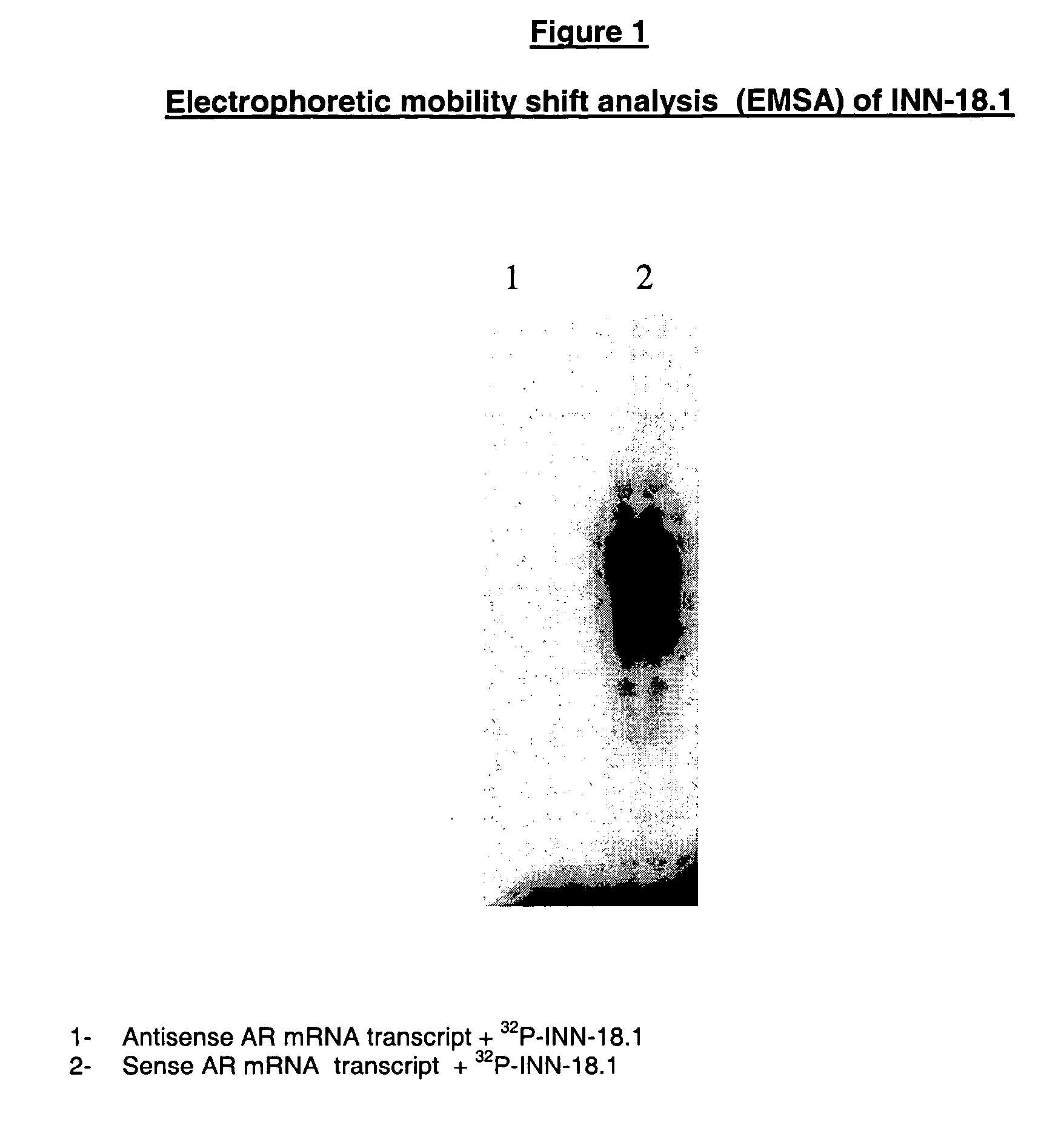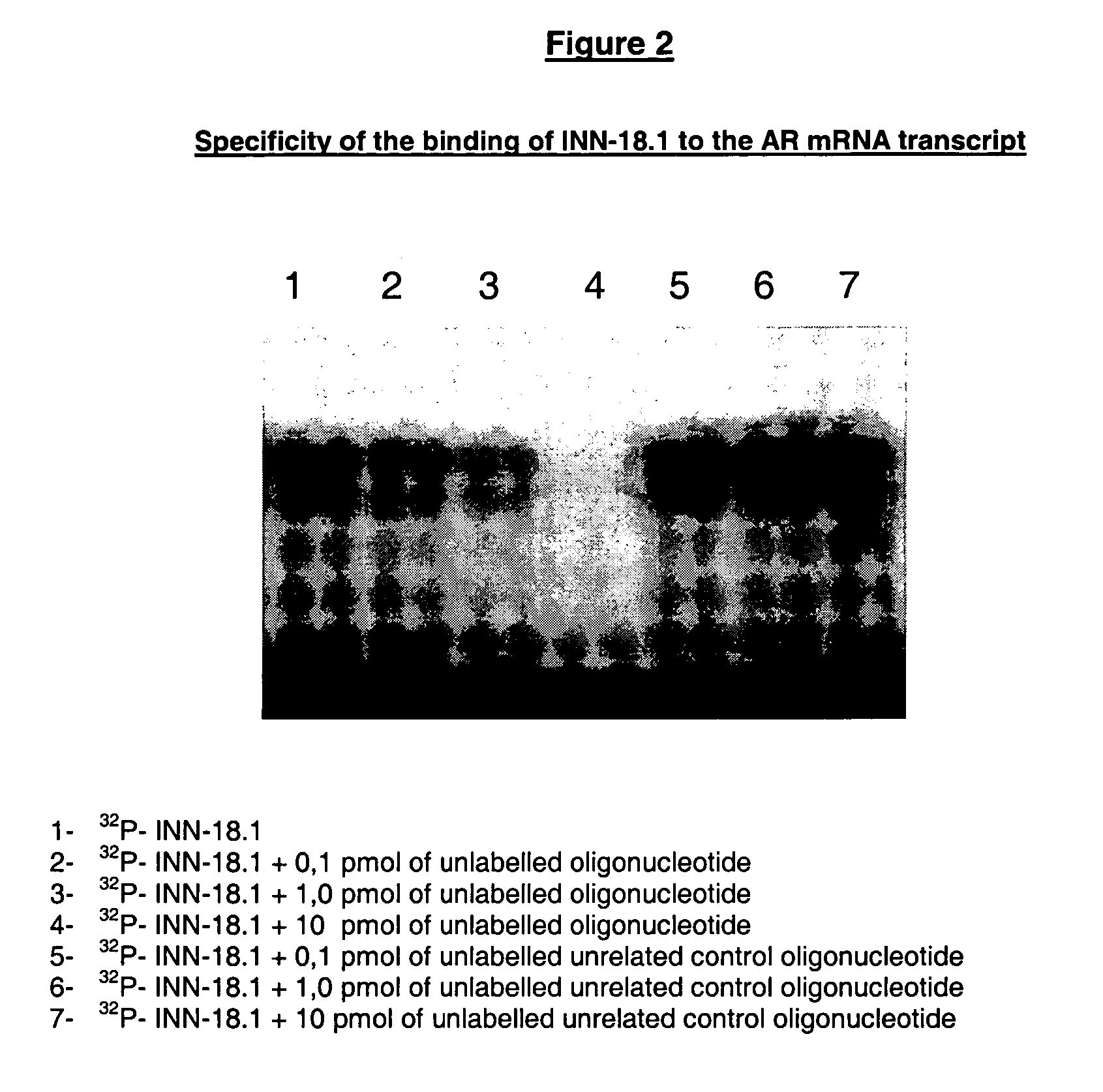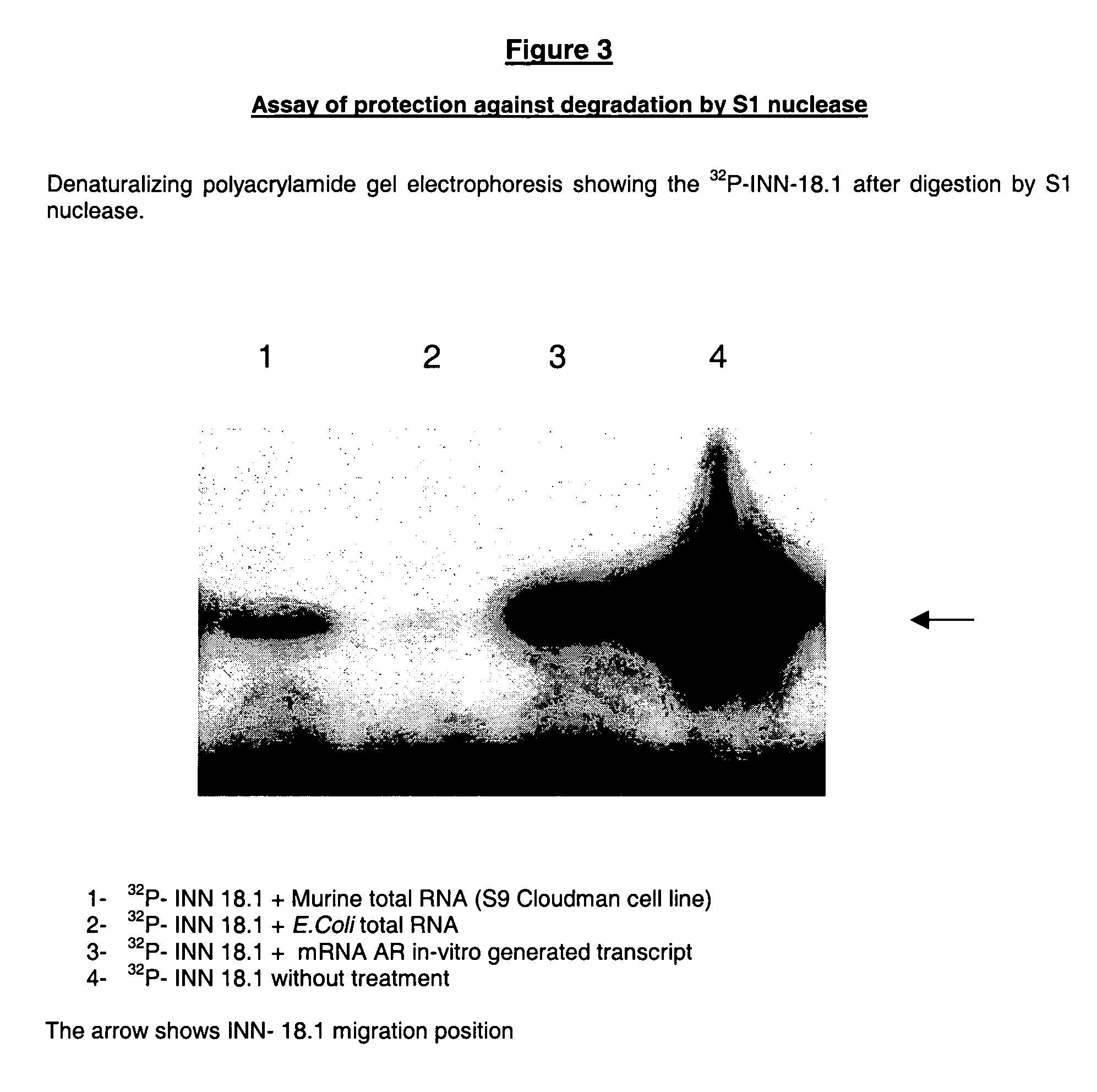Antiandrogen oligonucleotides usable for the treatment of dermatological androgen-related disorders relating to androgen metabolism, their pharmaceutical compositions, their uses and treatment method
a technology of androgen metabolism and anti-androgen oligonucleotides, applied in the field of new drugs, can solve the problems of reducing the quality of life of patients, male feminization or potential teratogenicity, and minoxidil quickly becoming a disappointmen
- Summary
- Abstract
- Description
- Claims
- Application Information
AI Technical Summary
Benefits of technology
Problems solved by technology
Method used
Image
Examples
example 1
In Vitro Assesment of the Designated Active Principles—Electrophoretic Mobility Shift Analysis (EMSA)
[0132] The electrophoretic mobility shift analysis comprises the following steps:
[0133] a) Radio-Labeling of Oligonucleotides
[0134] The oligonucleotides were labeled by incubation at 37° C. for 30 minutes at a final volume of 25 microL: [0135] 50 mM Tris-Cl pH 7.5 [0136] 10 mM MgCl2 [0137] 5 mM DTT [0138] 10 pmol dephosphorylated oligonucleotides, at the 5′ end [0139] 20 pmol (150 microCi) [gamma-32 P]ATP (specific activity >3000 Ci / mmol) [0140] 50 microg / ml BSA [0141] 3 U T4 polynucleotide kinase
[0142] The reaction was stopped by heating at 60° C. for 5 minutes and an extraction was carried out with phenol / chloroform. Labelled oligonucleotides were separated from free ATP labelled by 20% polyacrylamide gel electrophoresis. Labelled oligonucleotides were identified by auto-radiography, sliced from gel and eluted at 37° C. during a whole night to a final volume of 120 microL of DE...
example 2
S1 Nuclease Digestion Protection Assay
[0157] This technique indicates that both the ODN hybridize with the AR mRNA, preventing the oligonucleotide degradation, and the hybridization is complete or partial.
[0158] Partial hybridization (only a few nucleotides manage to hybridize with the target sequence) leads to a partial protection of the oligonucleotide molecule which, in turn, migrates faster in the gel electrophoresis. Complete hybridization (the whole oligonucleotide sequence hybridizes with the mRNA), results in a full-length oligonucleotide after the S1 digestion;
[0159] The S1 nuclease digestion protection assay consists of the following steps:
[0160] a) Oligonucleotide radio-labeling and purification.
[0161] As described in item a) of the EMSA assay.
[0162] b) In Vitro transcription of unlabeled Androgen Receptor (AR) mRNA
[0163] As described in item b) of the EMSA assay.
[0164] c) Hybridization of in vitro transcribed Androgen Receptor (AR) mRNA with radio-labeled oligonu...
example 3
[0172] This technique can show that the hybridization capability of the ODN's could trigger an RNAse H mechanism of mRNA digestion which, within the cells, will be responsible for the androgen receptor messenger (AR-mRNA) degradation. This mechanism leads to the diminution of the AR expression, thus an anti-androgenic activity can be displayed. The RNAse H degradation involves the following steps:
[0173] a. Oligonucleotide radio-labeling and purification.
[0174] As described in item a) of the EMSA assay
[0175] b. In vitro transcription of the androgen receptor (AR) mRNA as described in item b) of the EMSA assay
[0176] c. Nuclease S1 Digestion
[0177] The labeled AR mRNA transcript was incubated for 1 hour at 37° C. with 1.25 microM of the oligodeoxynucleotide and 0.25 U / microL of RNAse H in a buffer containing 100 mM NaCl; 10 mM phosphate pH=7, 0.1 mM EDTA and 1 mM MgCl2. Digestions were carried out in a total volume of 10 microL.
[0178] d. Casting of de...
PUM
| Property | Measurement | Unit |
|---|---|---|
| temperature | aaaaa | aaaaa |
| pH | aaaaa | aaaaa |
| aqueous | aaaaa | aaaaa |
Abstract
Description
Claims
Application Information
 Login to View More
Login to View More - R&D
- Intellectual Property
- Life Sciences
- Materials
- Tech Scout
- Unparalleled Data Quality
- Higher Quality Content
- 60% Fewer Hallucinations
Browse by: Latest US Patents, China's latest patents, Technical Efficacy Thesaurus, Application Domain, Technology Topic, Popular Technical Reports.
© 2025 PatSnap. All rights reserved.Legal|Privacy policy|Modern Slavery Act Transparency Statement|Sitemap|About US| Contact US: help@patsnap.com



